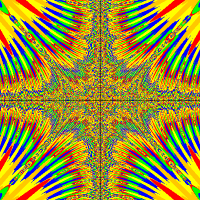Hello, I'm a bit new to Greenfoot and I'm required to make 'something fun' for returning to school on the 4th (cutting it a bit close I know), so far I've managed to get all the sprites for the actors and world classes, but I can't seem to get the hang of the new code. Previously we were learning Pascal and so this sudden change is a bid disorientating, I've been looking at tutorials from places like Mik's Blog if anyone else knows of that, but I thought I'd ask on here to see if anyone can help. The minigame is one of those fake duck shooting ranges you find at carnivals and places like that, you have a row of ducks, and about 10 seconds to shoot as many as you can.
For this I basically need help with three 'steps'.
Step 1: I need the ducks to move up and down (out of sync with each other so its not really easy to preempt their movement) In my sort of pascal pseudo-code: (I'll try and make it as 'Java' as I know)
While TimeLimit > 0 Do
{
For 'Counter' 1 to 8 do
{
Move Up (1);
}
Wait (2);
For 'Counter' 1 to 8 do
{
Move Down (8);
}
Wait (2);
}
Something like that if it at all makes sense.
Step 2: There's a crosshair that I want to follow the cursor so you're aiming with the mouse. Unfortunately I haven't the faintest clue how to do this, I'm hoping that's possible, if not then I have a backup plan that I should be able to do using the code from step 1 once/if I get help with that.
Step 3: When a duck is shot I need it to firstly change sprite and secondly to add to a scoreboard.
Once again I have no idea how to do this, I believe there's a scoreboard function or something similar in Greenfoot as I saw it mentioned in Mik's Blog. As for this I shall also be looking at his video on that but some help from you guys would be just as appreciated such as with the changing of the sprite.
Thank you to anyone who can/wants to help.
~Okemian (Pokemunn)





